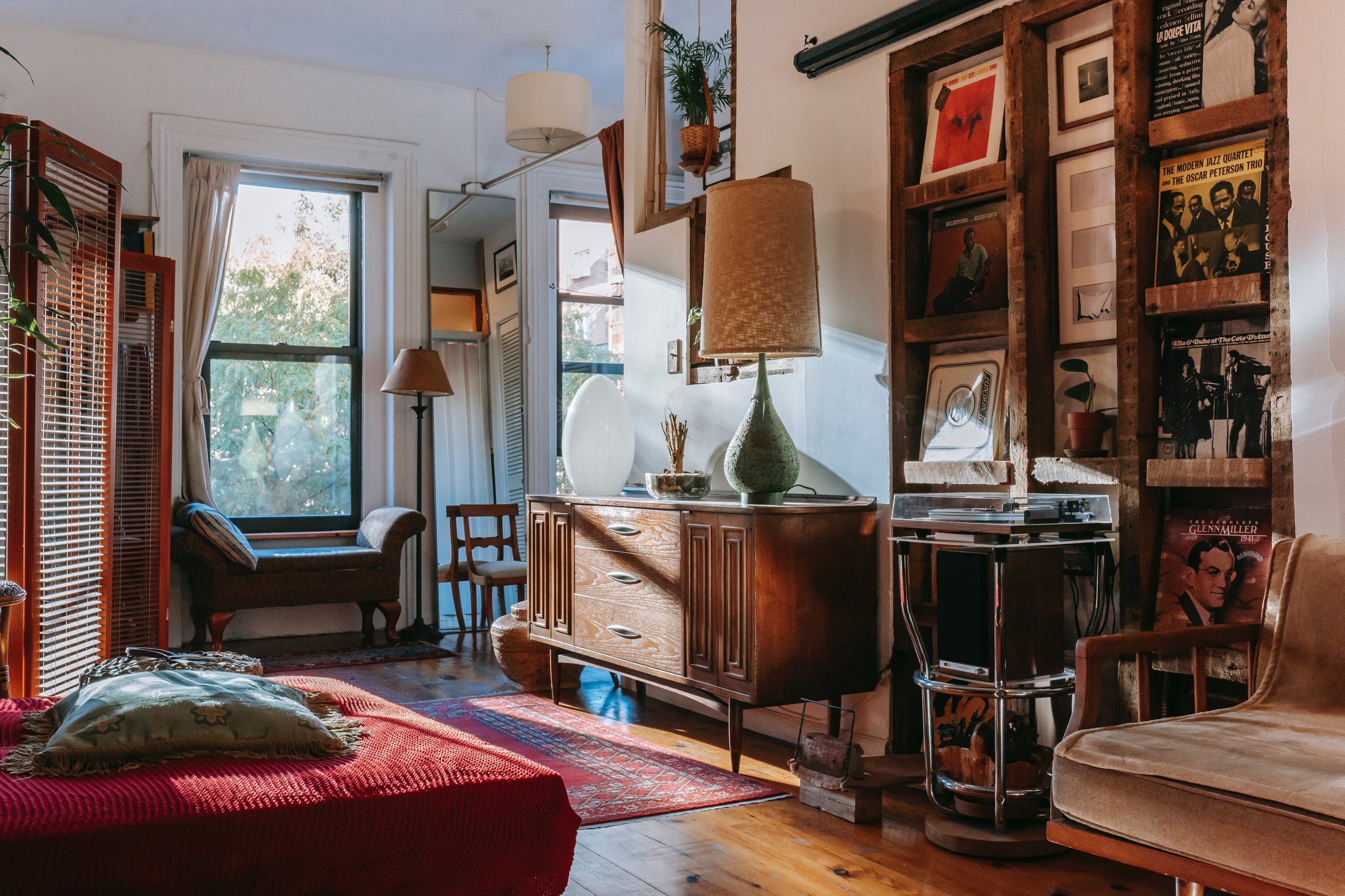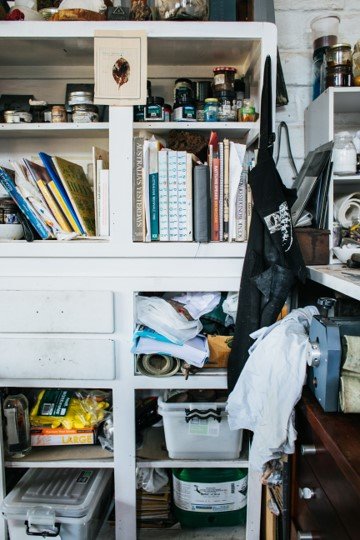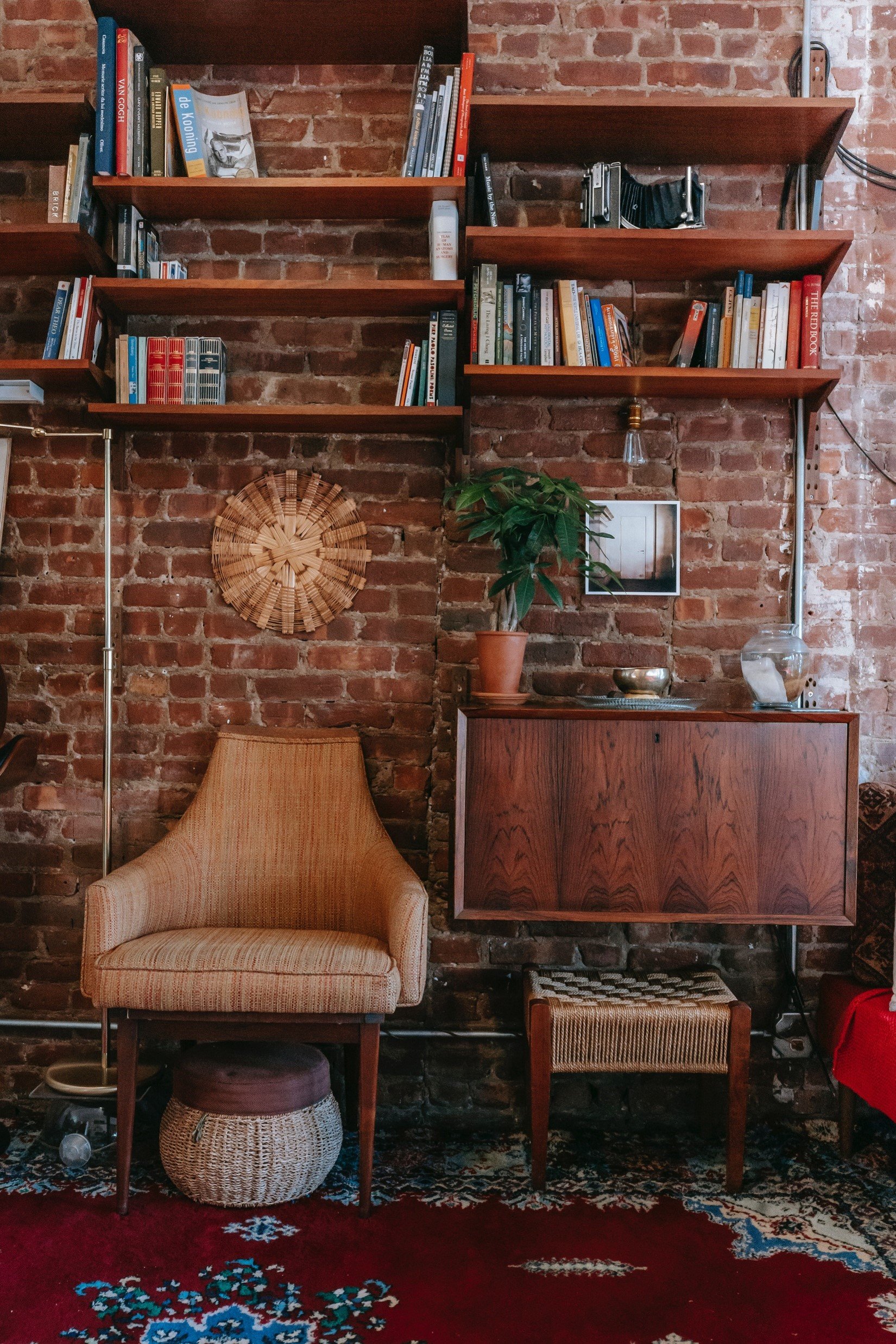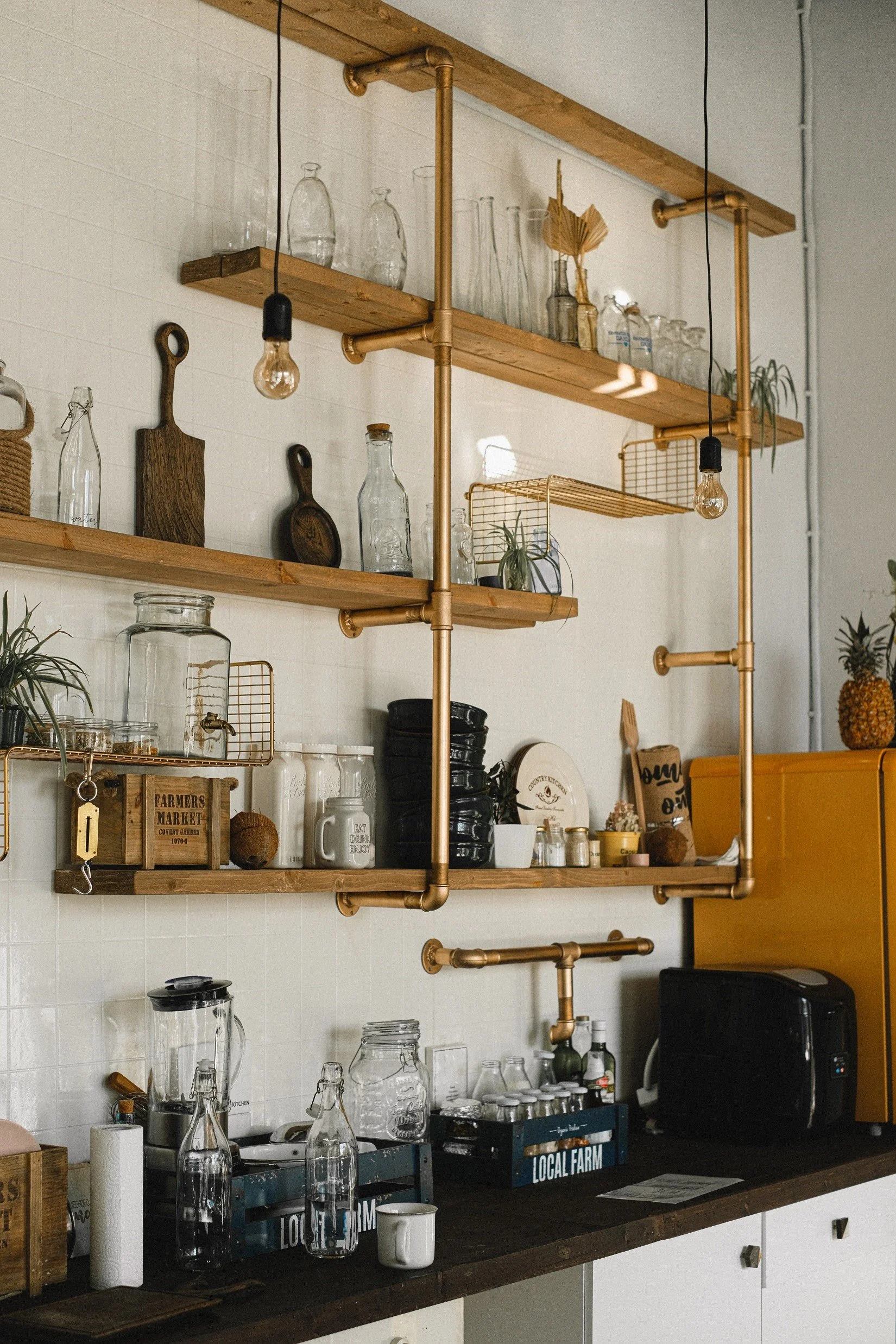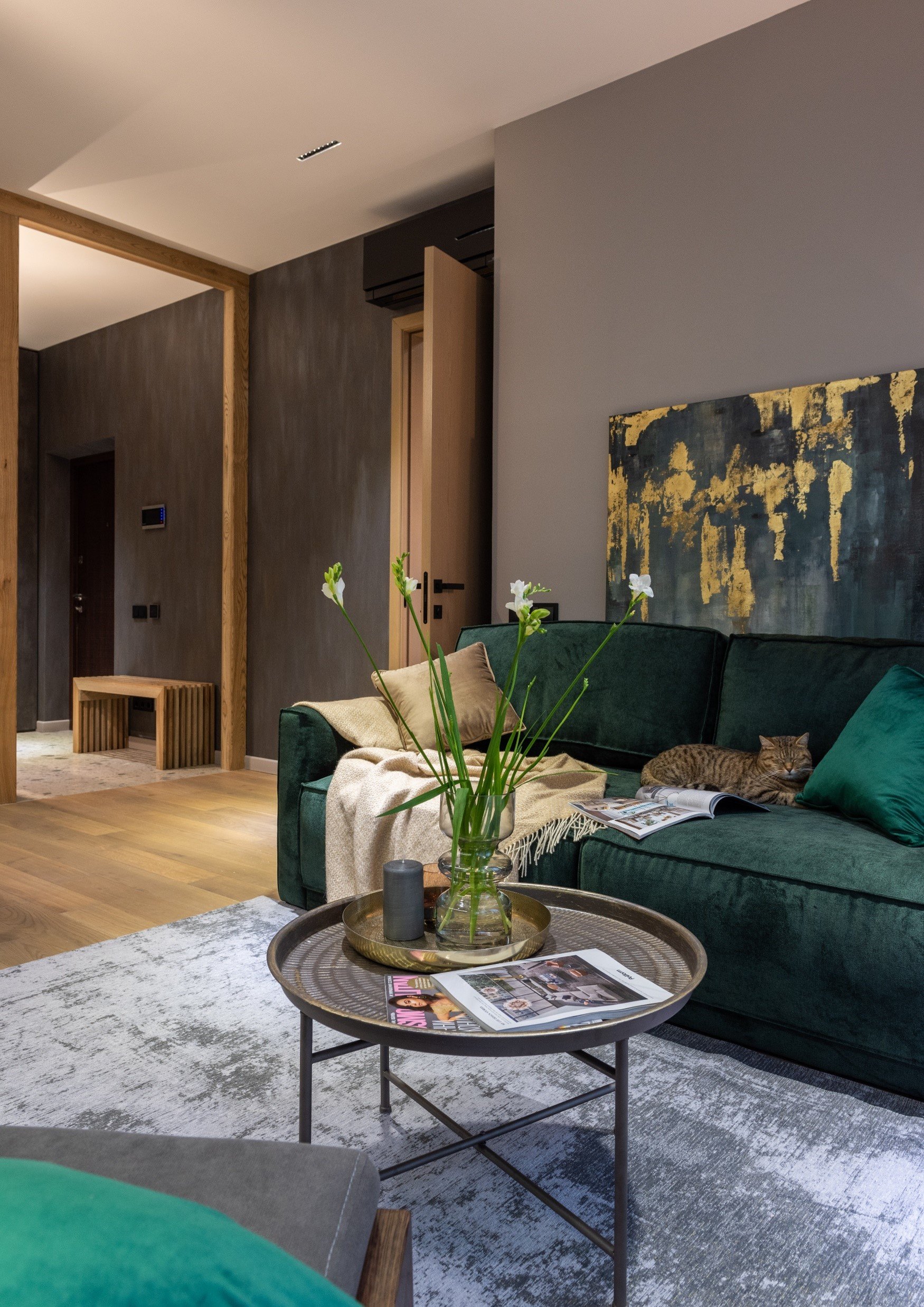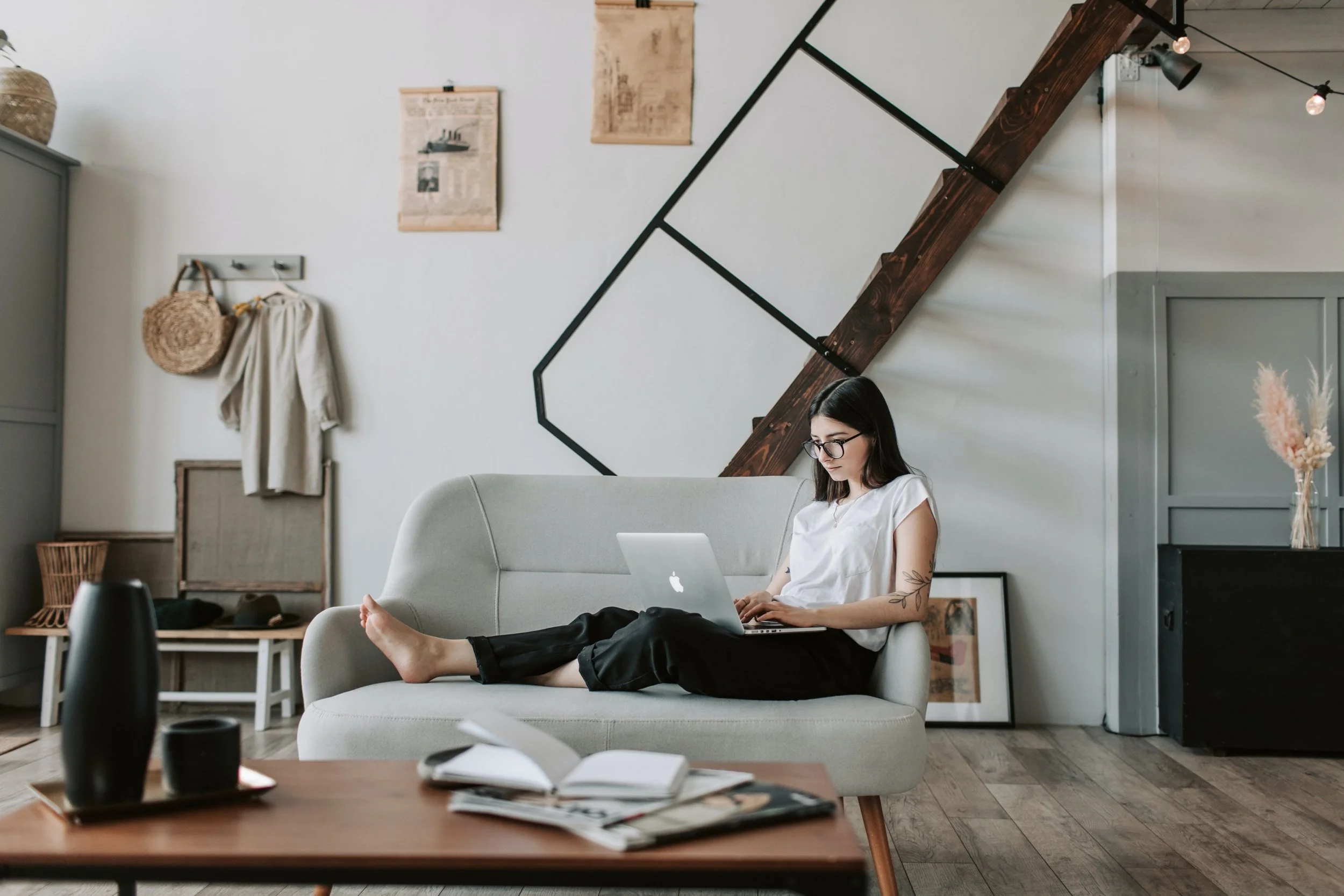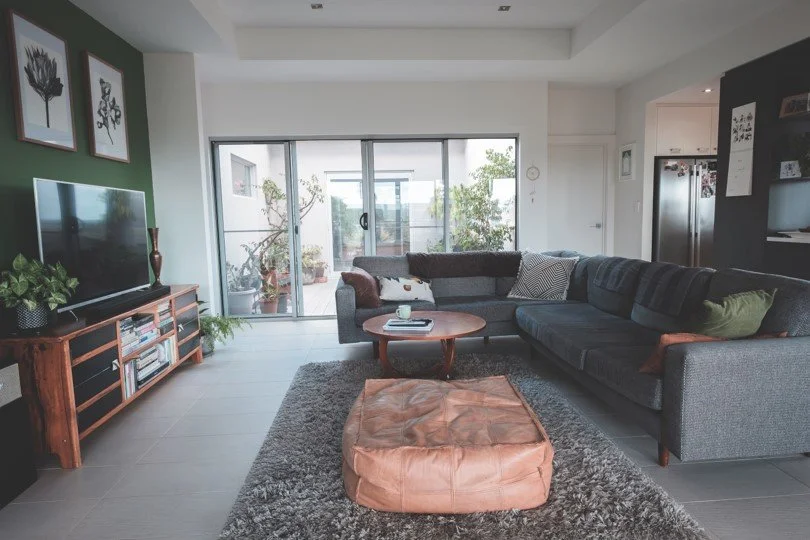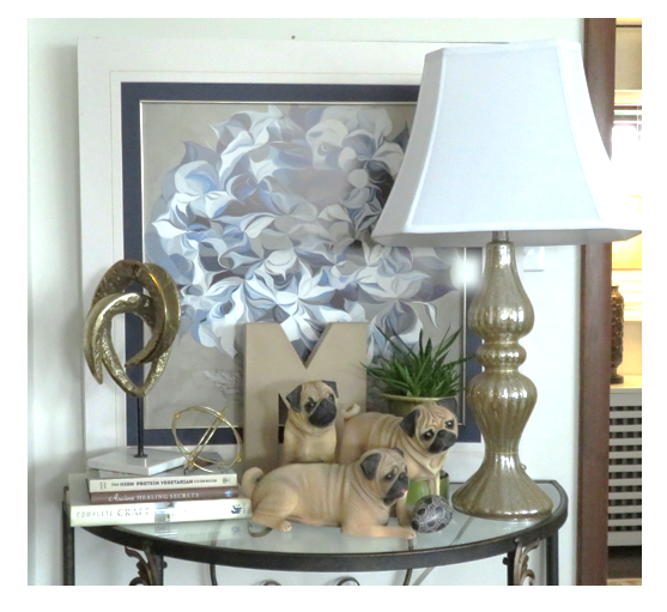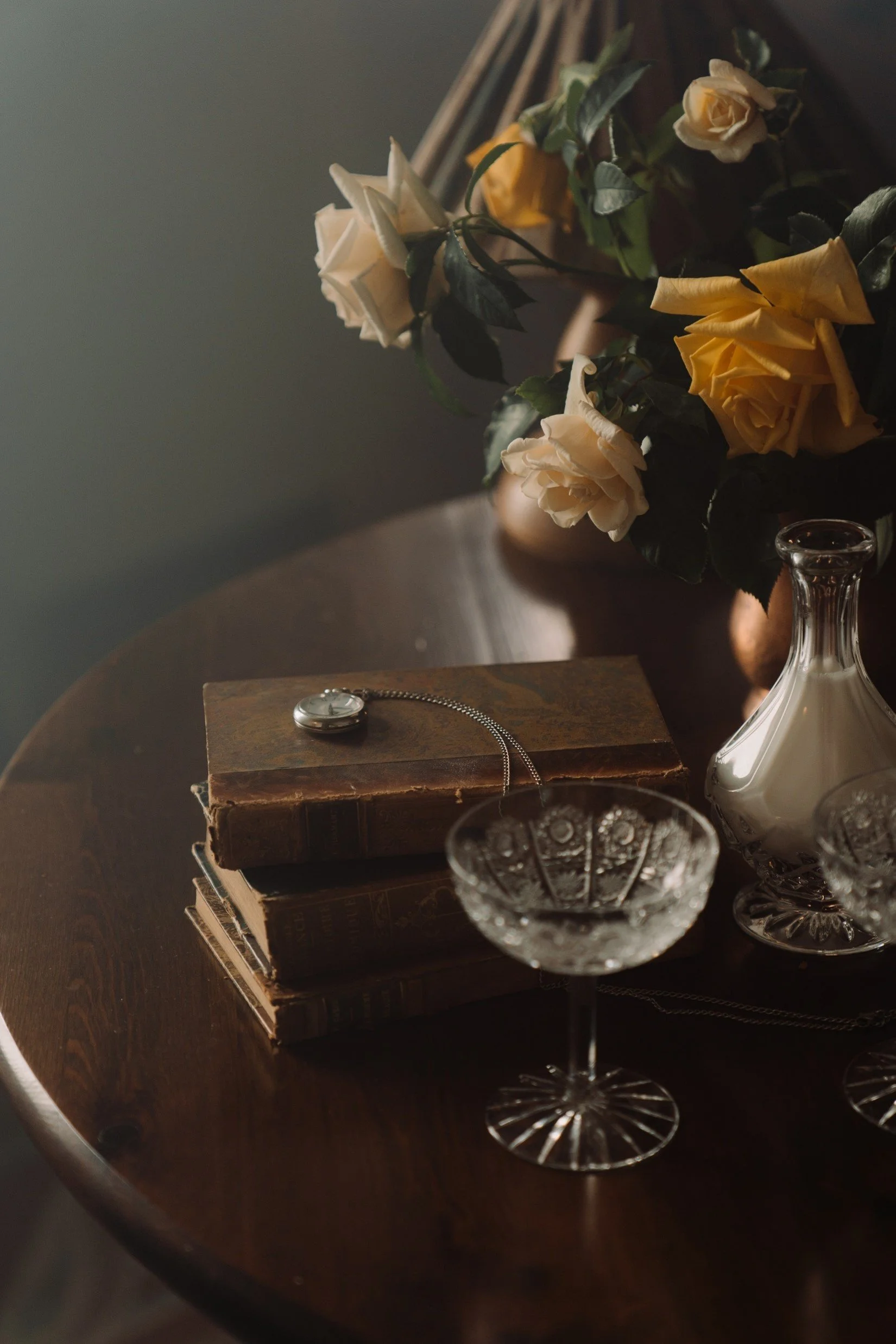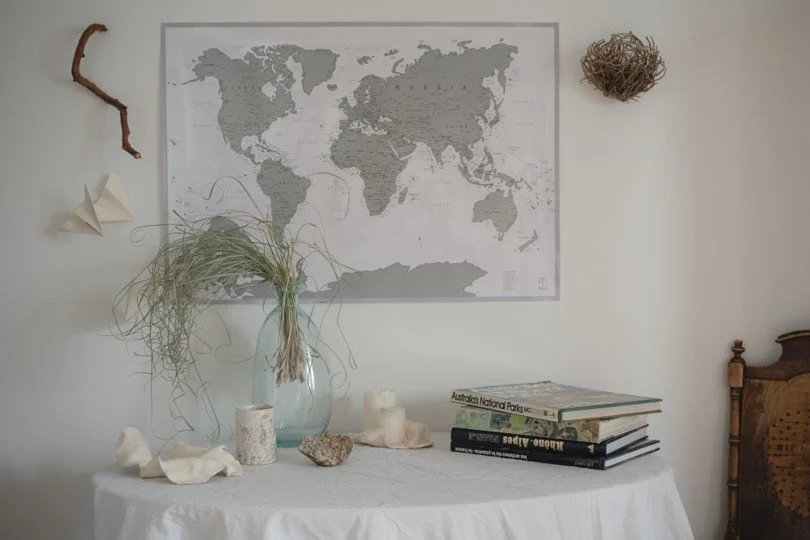Maximalism is like a big, vibrant, and bold explosion of style in your home. It's the opposite of minimalism and embraces a "more is more" approach to decor.
Instead of keeping things simple and sparse, maximalism is all about filling your space with an abundance of colors, patterns, textures, and objects that bring you joy.
It’s appealing as a decorating style because it allows you to create a space that’s rich, energetic, and full of personality. It showcases your individuality and expresses your unique tastes and interests.
One of the things I love most about maximalism is that you can break “the rules” and mix different styles, eras, and influences.
Charlotte May
You can blend vintage and modern, bring in global elements, and experiment with unexpected combinations. It's about celebrating the beauty of diversity and creating a space that feels unique and eclectic.
As a Maximalist, you’ll have plenty of opportunities to curate your collections and display your treasures.
Maybe you have lots of books, a gallery of artwork, or many vintage trinkets, maximalism allows you to proudly showcase the things you love and create a space that tells your story.
Ricky Esquivel
In a small house, being maximalist becomes even more interesting…
Done right, you can maximize the potential of your space by filling it with carefully selected objects based on how they make you feel, their character, and how they vibe with your overall style.
Anete Lusina
In other words, it’s about creating a curated look that feels intentional and thoughtfully arranged, rather than looking cluttered or overwhelming.
Rachel Claire
If it isn’t apparent yet, I prefer maximalism over minimalism.
Yes, this is the way it is, even though I live in a smaller house.
Is always having “stuff” in a small place easy?
Not all the time… But, as someone who enjoys the benefits of having many things that bring me joy, I can say the trade-off is worth it.
As a life-long small house dweller, and as a confirmed maximalist, I have quite a few tips to share with you on how to make maximizing your décor work.
Michael Helwig
So, if you’re nervous about being a maximalist in a smaller home, I’m gonna show you how to do it right.
Ready to transform your house into a vibrant and captivating space that reflects your abundance of style without feeling overwhelmed? Let’s explore not being afraid to go big, bold, and beautifully maximalist in your small home!
First, the challenge of being a maximalist in a small home.
We all know the struggle of wanting to fill our homes with things we love while trying to maintain a sense of order. Ultimately, we’re all just trying to avoid that dreaded cluttered look, right?
The key is finding that sweet spot where your vibrant and eclectic style can shine without overwhelming your limited space.
Charlotte May
First off, you need to get smart about your furniture choices.
Look for multi-functional pieces that serve a dual purpose, like storage ottomans that can conceal things you don’t want on display: games, toys, magazines, papers, videos, etc.
Try adding a stylish bookshelf that doubles as a room divider. This way, you can maximize storage while still having plenty of room to display your stuff.
Rachel Claire
Next, it's all about being a master curator.
Don't just throw everything you own into your space and hope for the best. Instead, carefully select and arrange your stuff with purpose and intention.
Anna Shvets
Group similar objects together, layer them artfully, and utilize vertical space to make the most of what you've got.
Now, let's talk about editing and decluttering.
As maximalists, we tend to accumulate things, and that's okay! But it's crucial to regularly go through and evaluate your stuff.
Carefully consider what truly brings you joy and adds value to your space. This is an important routine because it’s how you’ll be able to maintain that fine line between maximalist and cluttered.
If you’re familiar with “Life-Changing Magic of Tidying Up,” by Marie Kondo, you know that the book is all about developing a mind shift that enables you to become a tidy person.
This may seem antithetical to embracing maximalism, but it’s actually a great framework for pulling it off. This is especially true because maximalism is about curation rather than chaos. (You’ll notice that sentiment a few more times below.)
In her book, Marie Kondo outlines “6 rules for tidying up:”
Commit Yourself to Tidying up: This means you have to want to do it. Go at it with a positive attitude and be clear about what you want to accomplish. For example, maybe you want to create space for vertical display, but the spot you’re intending it to go is a catch-all corner. It can’t be both, right? So, set your intension that this corner is no longer a catch-all spot. It’s now a place for vertical display for things that you love. When you commit to that being the intention, don’t overthink it, just do it!
Imagine Your Ideal Lifestyle: This is all about envisioning how you want your space to be. In design, we use mood boards to capture and communicate the look and feel of a space. We’ll put together pictures that show you finishes, fabrics, art, textures, and anything else that will hammer home what we’re going for. When you’re imagining your ideal lifestyle, you can create your own mood board for how you want your room to feel. If you’re into writing rather than making pictures, write down exactly how you want your space to feel. The point is you need to get to your why. Why do you want to tidy your home? As you’re imagining your ideal maximalist lifestyle, remember to think about the feeling you want when you’re living in your house. Really tap into how you’ll feel when you finally display your favorite things, or how certain things will make you feel when they’re in a place of prominence. Tap into your feelings and use them as momentum.
Finish Discarding First: This is about editing. Specifically letting go of things that no longer serve a purpose for you. It’s untrue that maximalists hold on to everything forever. In my experience, I’ve had to let go of MANY things to pursue a change of wall color all the way to a change of address. Is this always easy? Heck no! But every time I’ve said good-bye to something that doesn’t serve me anymore, or something that hinders the progress of my project at hand, I’ve ALWAYS felt better about it. If letting go of stuff is hard for you, take Marie’s advice and make a ritual of thanking it for the purpose it brought to your life. Feel all the feelings and then let it go.
Tidy by Category, Not by Location: This is about sussing out what you have so you can avoid duplicates of the same item. On her website, Marie talks about tidying office drawers so you can organize paper clips, pens, papers, supplies etc. This is the way to designate the spot for these office necessities. So, as you move on to the attic, and you find a box of paper clips, you know that you already have a stockpile of them in the place where they belong. The extra box of paper clips is not necessary and can be removed. This ultimately frees you from tidying this rouge box of paper clips in the attic going forward. As a maximalist, you can apply this technique to decorating. If you’re in the den and you intend to have blue and white pottery displayed on your built-in shelves, but you have a couple of red and white pots mixed in, ask yourself: should I really mix them in? Or, if you have a yellow and white toile ginger jar, does this really fit in with my theme? When your abundance of stuff is more uniform – like the blue and white pottery is in color – then lots of those things look intentional. Mix in the reds and the yellow pieces and things start to look cluttered because the uniformity is what makes them look curated. Make sense?
Follow the Right Order: This is about tidying the “easy” stuff first. These are the things that you don’t have a sentimental attachment to. Marie uses the example of tidying clothes first because when you “thin the herd” of things that don’t fit or are out of style, you see the benefit of your efforts each time you open the neat and organized closet or the drawer that doesn’t stick with jammed up socks each time you pull it. When you move on to the “harder” stuff, you’ll be more resilient and motivated by the good feelings you have about de-cluttering your closet. If we use the previous example of the blue and white pottery on shelves again, the cohesive and powerful visual display of these things that you love will give you the push you need to edit out the red and yellow pottery that would be distracting. Although you may really like those pieces, and they could be tough to part with, the impact and visual appeal of the blue and white pottery alone is the wow factor that makes the display as powerful as it is.
Ask Yourself if it Sparks Joy: This question, when asked as you hold an item in your hands and as you ponder the question carefully, should elicit a feeling in you. The goal of course is to feel joy. You are your own feelings barometer and as you consider each object by holding it and experiencing a reaction in your body, you’ll know when it brings about a feeling or not. Marie says she feels a “thrill” as she holds an item. That’s the way her body expresses the spark. If you feel nothing, you know it’s okay to let it go. How can you apply this to deciding what stays and what goes in your maximalist décor project? Well, you want your home to make you feel joyful, right? If you surround yourself with random stuff that doesn’t click with you, then you’re just accumulating without purpose. But, if you surround yourself with things that have stories to them, and that make you joyful when you look at them, then you know you’re on the right track. Curated is meaningful and purposeful. Clutter is random and chaotic.
Yes, but how do I pull off a maximalist styled small house?
There are a lot of tips here, but they all focus on creating a maximalist decorating scheme with a purpose.
Mix and match different styles and materials.
Begin by identifying the styles you are drawn to.
Whether it's modern, bohemian, industrial, vintage, or a combination of several styles, understanding your preferences will help you curate a cohesive and intentional look.
Also, Consider the colors, patterns, and textures that resonate with you.
Max Rahubovskiy
Establish a Dominant Style:
This will be the foundation of your design concept. Your style will help you create a framework to build upon.
For example, you might choose a Mid-Century Modern style as your dominant look, which will guide your furniture choices and overall design direction.
Vlada Karpovich
Introduce Contrasting Styles:
Pick elements from contrasting styles to add visual interest and depth to your space.
For instance, if your dominant style is MCM, you might introduce bohemian accents like woven textures, vibrant patterns, or organic materials to create an eclectic and inviting vibe.
Think of the elements of your contrasting style as accents that enhance or contrast your dominant style.
Michael Helwig Interiors
Play with Textures:
Mix smooth surfaces with rough textures: Pair a sleek leather sofa with a chunky knit throw or combining a glossy lacquered side table with a woven rattan chair.
Texture adds depth and dimension and creates a sensory experience that’s very engaging for your senses and timeless, stylistically.
furkanfdemir
Combine smooth with rough textures, shiny objects with matte finishes, and natural materials with man-made things.
Layering different textures and materials creates depth and adds tactile interest to your arrangement.
Combine natural materials like wood, rattan, or stone with sleek metals, glass, or acrylic.
The key is to balance and repeat the materials throughout the space for a cohesive look.
Create Visual Hierarchy:
Select a few key pieces that anchor the space. These can be standout furniture pieces, unique art, or interesting lamps.
Surround these focal points with complementary things that harmonize with the room while tying the different styles and materials together.
Lachlan Ross
Pay Attention to Scale and Proportion:
Large-scale furniture can be balanced with smaller accessories, while bold patterns can be calmed with solid-colored pieces.
Maintaining a sense of visual balance helps create a curated and intentional look.
Anastasiya Vragova
Plus, you want to have items of different heights and proportions to keep things interesting in this style. When everything is the same, that’s monotonous and dull – not maximalist at all.
Grouping and layering objects for impact:
All those blue and white pottery items are a perfect example of a group of items that can be arranged for impact.
They could also be considered a vignette…
Michael Helwig Interiors
Vignettes are small arrangements of objects that tell a story or create a focal point.
Mix and match all those items of varying heights, sizes, and textures to add interest.
Try combining a stack of books with a favorite object, a plant, and a framed photo to create an interesting vignette.
Play with Symmetry and Asymmetry and Negative Space:
Symmetrical groupings provide a sense of order and balance, while asymmetrical arrangements can be more dynamic and unexpected.
Mix and match symmetry and asymmetry to create visual interest and to capture attention.
Maria Orlova
Leave some breathing room within your arrangements to allow each object to shine and be appreciated on its own.
Negative space helps create a sense of balance and prevents the arrangement from feeling cluttered.
Rotate and Refresh:
Swap out objects, introduce new things, or reconfigure the grouping to create a new focal point.
This helps you showcase different items or to change the display to suit changing seasons or moods.
Arranging and layering objects with intention and creativity can transform a small space into a captivating display of your personal style.
cottonbro studio
It allows you to highlight your favorite items and create visually engaging compositions that become focal points in your home.
Think About Your Available Space:
Be deliberate about the items you acquire to ensure that your space stays balanced.
This ultimately helps you avoid buying unnecessary or redundant stuff that can make your home feel chaotic or cluttered.
That means think twice about acquiring more stuff:
Being mindful and intentional about the things you bring home is still important, even with a maximalist direction.
New stuff should always align with your vision, serve a purpose, and flow with your overall design scheme.
Karolina Grabowska
In a small home, space is limited, right? So, before bringing in new stuff, consider whether you have enough space to keep it without it looking like too much stuff.
Remember, Maximalism doesn’t mean cluttered. It’s curated.
When you think twice about each thing, you can catch yourself in those impulse buy moments. That pause will help you keep your small home on track to being filled with meaningful and functional items that enhance your life and reflect your curated maximalist style, rather than cluttered up.
Finally, Curate Collections
Select a theme or focus for your collections.
Establishing a cohesive theme helps you create a sense of unity and purpose in your collections.
Cohesion and Visual Harmony:
Pixabay
This allows you to curate items that share a common thread, whether it's a particular style, color palette, era, or subject matter. This cohesiveness brings a sense of order and intention to your space, preventing it from feeling cluttered or disjointed.
Reflecting Your Interests and Personality:
Selecting a theme helps you showcase your passions and create a space that feels authentically you.
Whether you collect vintage cameras, seashells, or artwork from a specific artist, your chosen theme reflects your individuality and becomes a focal point of your curated style.
Taryn Elliott
Creating Impactful Displays:
By grouping items within your chosen theme, you can create eye-catching displays that draw attention and spark conversation.
A gallery wall of botanical prints, or a shelf dedicated to blue and white pottery, these thought out and curated displays become impactful features in your rooms.
Pexels
Enhancing Organization:
Having a theme or focus for your collections enhances organization. It provides a framework for categorizing and arranging your items, making it easier to keep them organized and easily accessible.
This not only prevents clutter but also allows you to appreciate and enjoy your collections more fully.
Allow Room for Growth:
Pexels
A focused theme or focus for your collections doesn't limit your ability to expand and evolve. It provides a foundation you can build on and parameters often make it easier to stick to a plan.
Take the blue and white pottery again – I know a dead horse, lol! But it’s a great example of a “focused theme” where the parameters of only blue and white pottery help to create cohesion.
Excluding the red and yellow pottery sets the parameters for the display. That doesn’t mean that you can’t vary the shape, size, and scale of each individual blue and white pottery piece. Variation in those ways will make it far more interesting.
Tell a Story:
Collections with a theme or focus can often tell a story. They create a narrative or visual journey within your home, providing glimpses into your experiences, passions, or preferences.
Marina Leonova
When exploring the idea of a theme or focus for your decor, it's important to consider your interests, style, and the overall aesthetics of your space.
Choose a theme that clicks with you, whether it's based on a hobby, a specific era, a color scheme, or a subject matter that you're passionate about.
Be open to exploring different possibilities so your collections grow and evolve over time.
Read Next:
Small Black And White Bedrooms: Unlocking The Power Of High Contrast Design
Maximize your small black and white bedroom with high contrast design. Discover expert tips on creating a visually stunning and functional space with practical design solutions. Learn how to balance high contrast with lighting, storage, organization, and more for a welcoming and dynamic atmosphere.
Join the Fun!
If you enjoyed this post and you want to keep seeing my weekly blog, the best way to do that is to subscribe.
You can subscribe by downloading my 11 Secrets Only Designers Know to Make Your Space Rock. If you’re curious about how decorators and designers make a home look magazine ready, you’ll love taking a gander at these 11 secrets. You’ll learn how to style your room from the floor up and it will work for ANY space you have.
I write about small space design and decorating, sustainable furniture options, positive self care and a variety of do-it-yourself home décor.
I’d love to connect with you!
“Michael Helwig was top-notch, very professional and responsive to my needs. He allowed me time to explore ideas and try out a variety of combinations until we found the perfect fit. Michael provided detailed information and offered beautiful ideas to make my dream living room become a reality. The furniture he sourced has totally transformed my living room space. Everyone that has seen my new living room has one word, WOW! A special thank you to Michael for a wonderful experience.”
“Michael was very knowledgeable and guided us, with great patience and good humor, through the process of designing our dining room and helping us find the perfect sleeper sofa. He offered really helpful advice when we asked questions - which was often - but at no time did we ever feel pushed. He helped me when I felt like I couldn’t make one more decision. When my new furniture finally arrived I realized everything down to the pillows was perfect. I couldn’t be happier!”
Anastasiya Vragova
Michael is Principal designer and blogger at Michael Helwig Interiors in beautiful Buffalo, New York. Since 2011, he’s a space planning expert, offering online interior e-design services for folks living in small homes, or for those with awkward and tricky layouts. He’s a frequent expert contributor to many National media publications and news outlets on topics related to decorating, interior design, diy projects, and more. Michael happily shares his experience to help folks avoid expensive mistakes and decorating disappointments. You can follow him on Pinterest, Instagram and Facebook @interiorsmh.


